
Dahlia Experiments 2025 - Source Books For Dahlia Growing and Hybridising
Hello friends,
As you've probably already figured it out by now, I love doing gardening experiments. Whether it be growing my own wheat, and then harvesting that flour to bake into my own bread, or growing my own linen plants so I can spin and then weave the fibre from it, I'm curious about how the world works, and especially how plants work. This mostly comes from the fact that I'm a trained scientist, I have a PhD in Plant Biochemistry, and also a certificate in Horticulture. From a very young age, while gardening with my grandfather and aunt in their backyard, I fell in love with plants, and I decided I wanted to work with them.
Even though I am no longer in these fields of work, I still love learning about plants, and I use my garden as an experimental testing ground to do this on a very small scale. This, combined with my obsession and love of dahlias, I've decided that this growing season is going to be the one where I hone my dahlia skills including growing hybridised seeds from scratch, taking my own cuttings, and also breeding new dahlias from dahlias I already have growing in my garden.
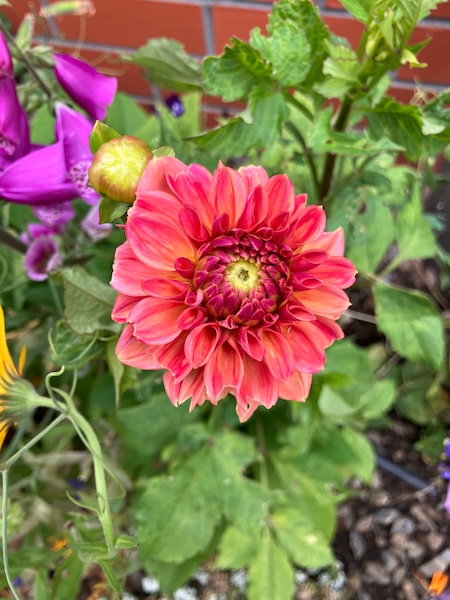
To do this my first job has been to find good source material to work from. Even though there is a tonne of information about dahlia growing and hybridising on the internet, it's hard to know what information is accurate, and what information is incorrect. Luckily there are some very good source books available from growers and hybridisers I trust, and I now have three books from them at my disposal.
First up is Erin Benzakein from Floret Flower Farm, her work with dahlias and other plants like zinnias is legendary, and her book "Discovering Dahlias" has been my go to dahlia book for years. It includes understanding dahlia types, how to grow, store, and divide dahlias, and also advanced techniques including propagating and hybridising dahlias. Her book also includes a great section on floral designing with dahlias, along with a visual section of her favorite dahlias sorted by colour. I really recommend this book to any new dahlia grower.
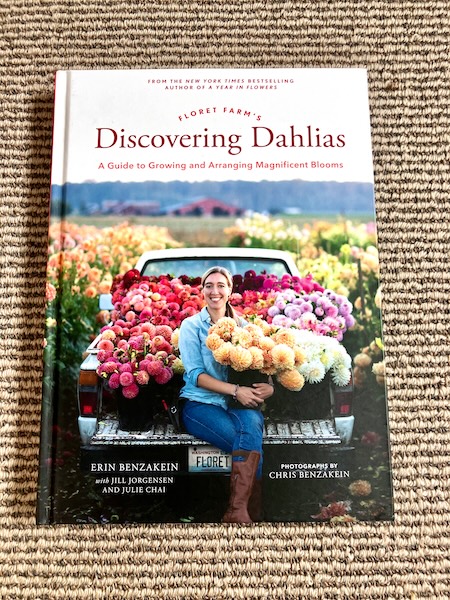
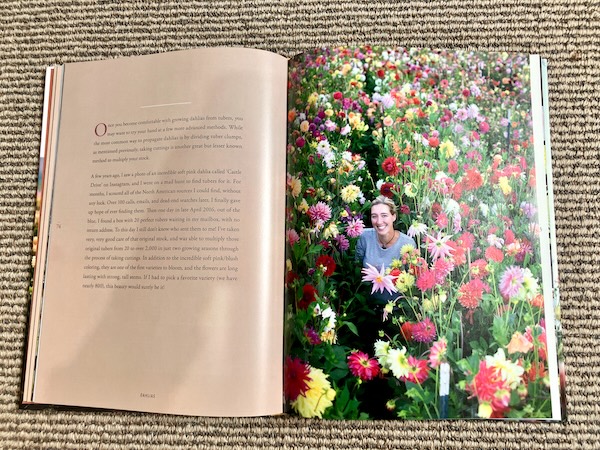
The last two dahlia source books I now own are by Kristine Albrecht, the owner of Santa Cruiz Dahlias. Her long term work on dahlia breeding, and her deep dive into dahlia genetics (which she is willing to share), makes her a fountain of knowledge about dahlias. Her book "Dahlias: Seed to Bloom" is an in depth guide to dahlia growing from seed to bloom. This is a great companion book to "Discovering Dahlias", and I now use them both side by side.
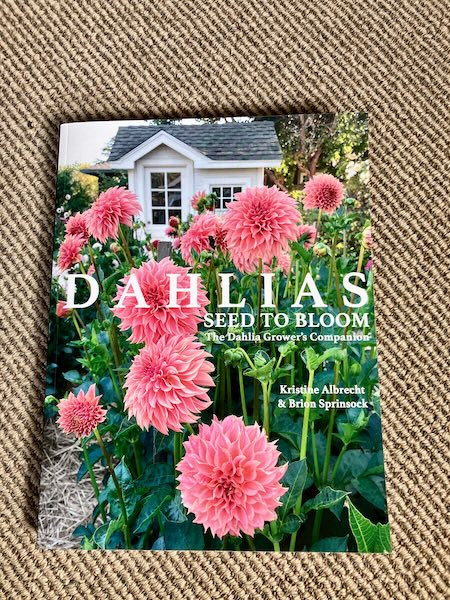
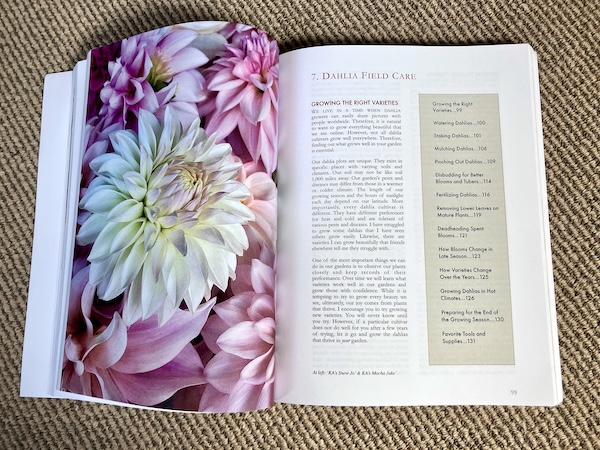
Kristine Albrecht's second book "Dahlia Breeding for the Farmer-Florist and the Home Gardener", is a small, but dense step by step guide to hybridising new dahlia varieties by seed. Its sections on dahlia genetics, traits to target in dahlia breeding, and growing dahlia seedlings, is perfect for the dahlia enthusiast interested in dahlia breeding. It was also really great to see her record keeping set up as well, as detailed notes are needed to decide whether a dahlia seedling has the traits you are looking for in the first year, and in the continuing years, if you decide to keep growing it.
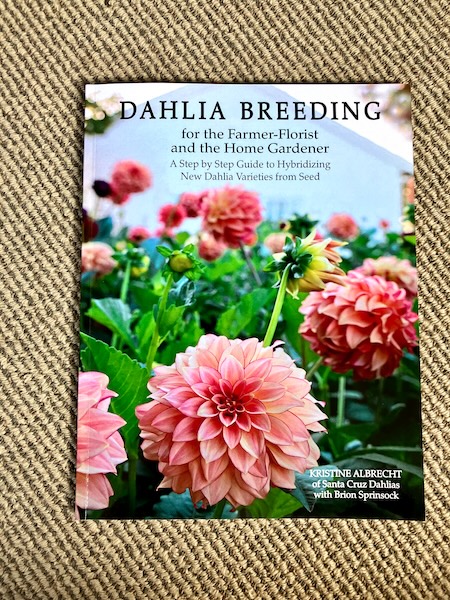
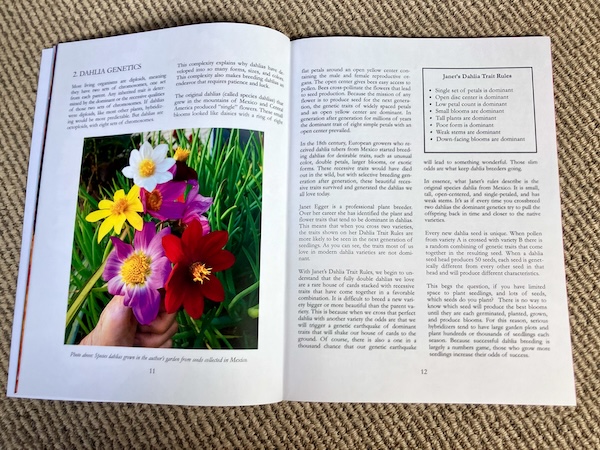
With spring now sprinting towards summer with each passing day, and the first of my garden dahlias are popping their leaves above ground, I can't wait to dive into all things dahlias this growing season.
Have a wonderful day
Julie-Ann
Want to discuss my post? Feel free to chat with me on Instagram or Mastodon or Bluesky.
Growing and Harvesting European Linen for the 2023-2024 Season
Hello friends,
As a crafter and a gardener, I like to combine my hobbies in interesting ways. In this case it was growing and harvesting European flax (Linum usitatissimum) in order to prepare some linen for spinning and weaving.
Back when we lived in Wellington I bought some Essene European flax seed (Linum usitatissimum) from Koanga Gardens. In the first year I sowed half the seed packet into a 1 m x 2 m space, and grew the linen plants mainly for producing seeds, so in years afterward I could grow even more flax for linen. My linen harvests thereafter would be self-sustaining. I now grow linen every couple of years for collecting seeds, and stockpiling flax stalks for making linen.
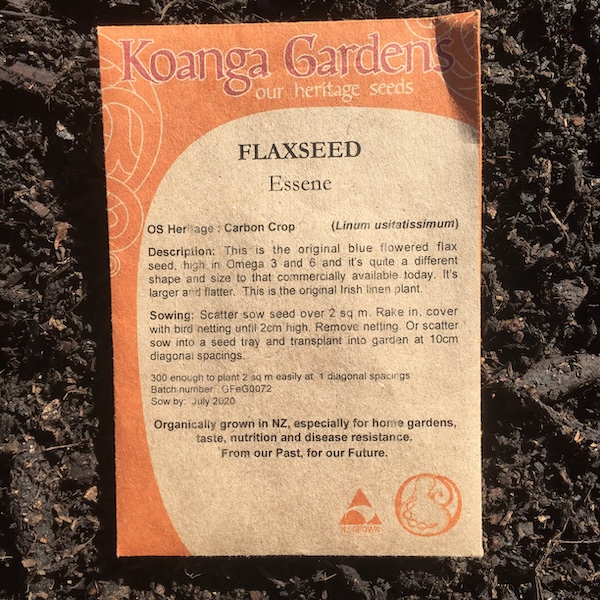
This blog post is showing the process of growing linen from seed sowing to harvesting. In later blog posts I'll share as I go through the flax processing and then spinning and weaving it.
The first thing I did was buy the book "Homegrown Linen: Transforming flax seed into Fiber." by Raven Ranson. This book is very detailed, and shows all the necessary steps in growing homegrown flax for linen. I then used it to calculate how to grow it in New Zealand seasons.
The first step in growing flax seed is deciding when to sow the seed. Flax seed is sown in spring when oats and barley are sown, and in our case it was in mid-October. If flax is grown for linen then the seeds are grown very close together so that long tall stalks are produced, but if flax are grown for seeds, they are planted further apart to allow for branching and more flower production.
After weeding the patch of ground it was to go into in spring last year, I fertilized it with a high nitrogen fertilizer in the form of sheep pellets, and then prepared the soil to a fine tilth. I then sowed the flax seed in a broadcast fashion very close together, so that the linen plants would grow very tall, with little to no branching. After covering the seeds over with a fine layer of soil using a rake, I watered the seeds in, and then covered the crop with bird netting to protect the seeds from the local very hungry avians. It takes approximately 100 days from seed sowing until plant harvest, so this was classed as day 0.
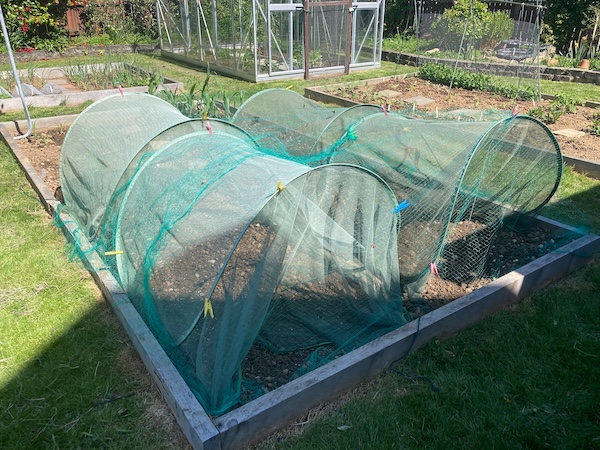
Within a few days of watering each day, the flax seedlings began to appear. It is always very exciting to see them come up.
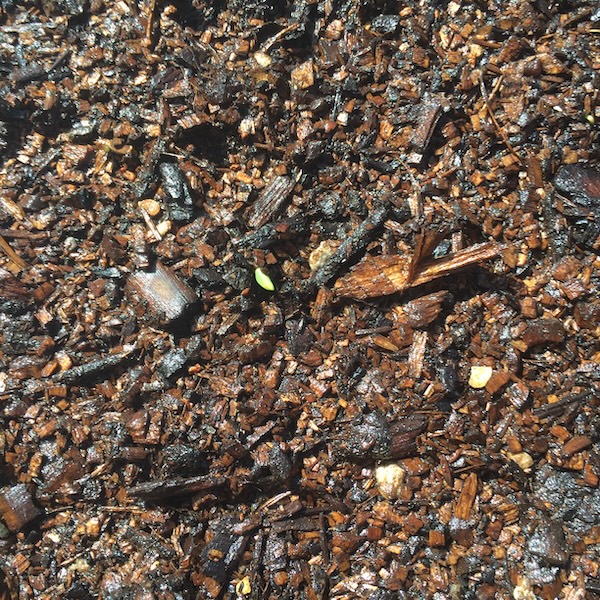
And within a week, the seedlings were actively reaching for the sky. In the photo below I was growing the linen plants for seed, but as you can see, I spread them a little too far apart.
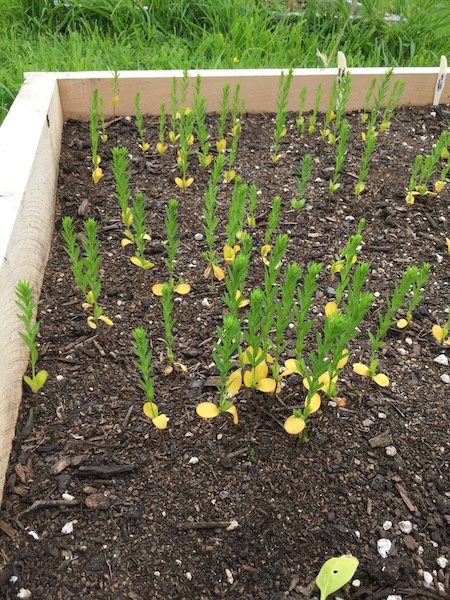
Once the flax starts growing, it basically fends for itself. If sown very close together no weeds will grow, making it an easy crop to take care of, as long as it gets enough water. And once the flax reaches about 50 cm tall, it begins flowering at around day 60. The beautiful blue flowers open during the day, and close again at night. And now that the plants are tall, they sway very prettily in the breeze.
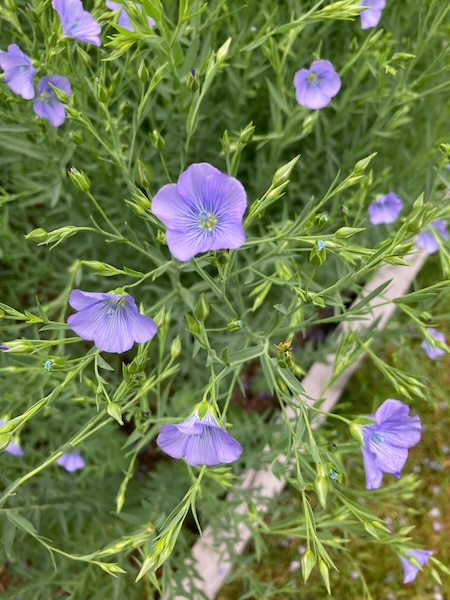
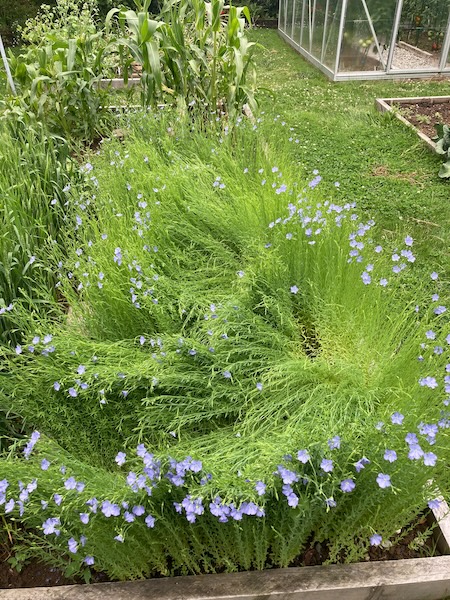
Flowering and setting seed boils takes around a month. One of our neighbourhood cats, who we call Patches, decided to make their snoozing spot inside the linen crop. No matter how many times I tried to shoo them away, they kept coming back, so I let them be. It's a good thing they're cute because they ended up squishing a bunch of linen...
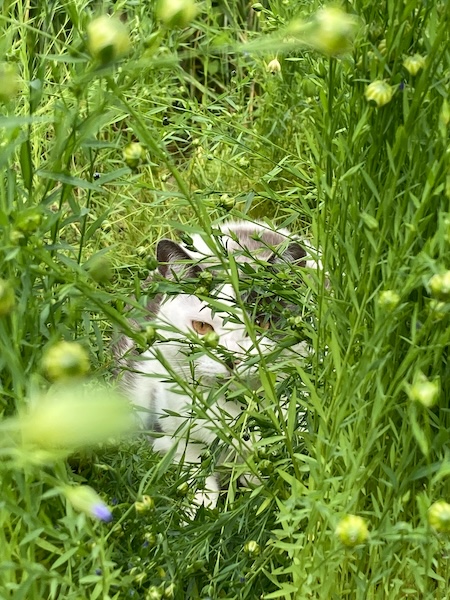
Once the seed heads (boils) have set, now is the time to think about when to harvest. It's a good idea to set aside a section of your crop to let the boils (seed heads) mature and turn brown, which means they are then ready to harvest for next years seeds. Their plant parts will be dry and thick and yellow, and they won't make good linen.
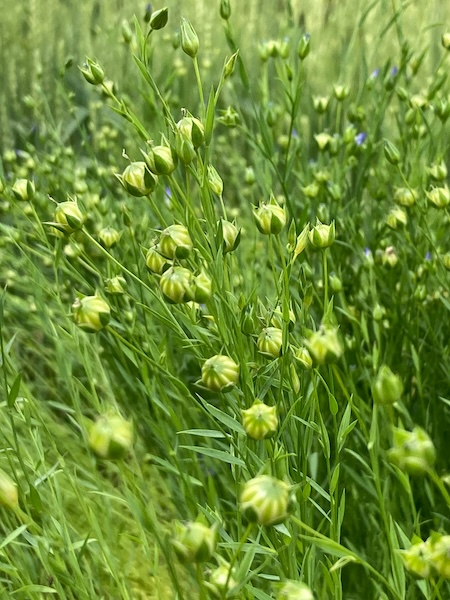
The rest of your crop will be used for producing linen. When the bottom half the plant has turned golden, it is time to harvest the plants. The seed heads will not usually be viable for collecting seed, but I've found in the past that some of them can be.
The best way to harvest linen is to pull them out by hand in clumps. Lay the harvested linen plants out on the grass, all facing the same way, with the roots at one end, and the boils at the other. Once you've harvested all the linen plants, it's time to stook the plants, which means creating bunches of sheafs, and then tying them in the middle like the poles of a teepee. You want air to get up into the middle of the sheaf to dry it out. Place the sheafs upright with the roots at the bottom and let them dry in the sun on sunny days.
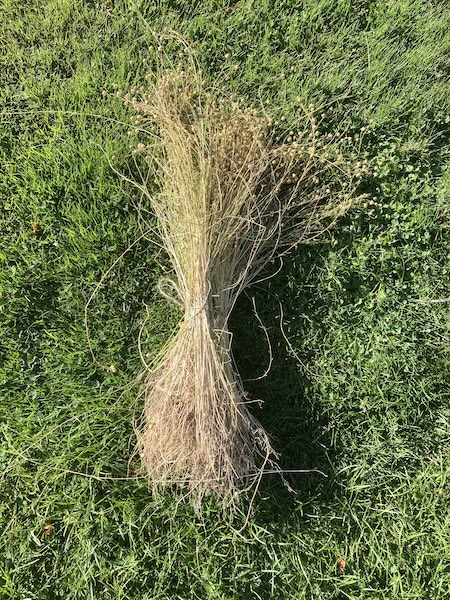
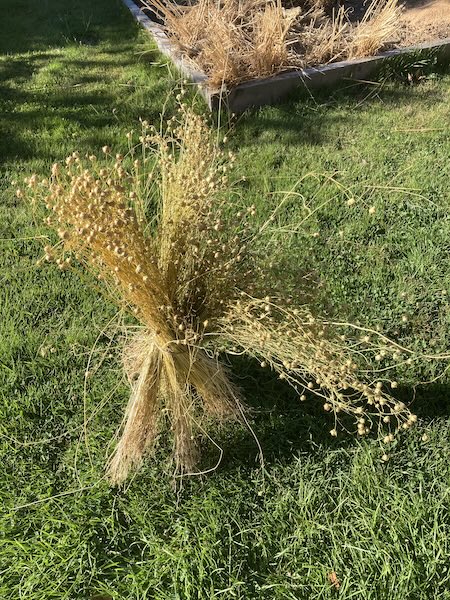
Once the linen plant sheafs are dry you can store them until you want to begin processing your linen. The next step is processing my current linen crop, and this will occur in a couple of weeks after autumn starts...
Have you ever tried experimental gardening? I've done this in the past with growing wheat, and it's very interesting to see how food and fibers are processed. It makes you appreciate how complicated food and textile production is.
Have a wonderful day
Julie-Ann
Want to discuss my post? Feel free to chat with me on Instagram or Mastodon or Bluesky
Book Review - The Very Secret Society of Irregular Witches
Hello friends,
I
absolutely love reading, and have been a book lover and collector for
most of my life. Some of my earliest memories as a child are of my mum
taking me to a local library, or of us going into town for the day, just
so I could pick up a copy of the latest book in whatever series I was
currently obsessed with. And pretty much nothing has changed in the many
years since then.
There is nothing better on a cold and rainy autumnal day, than to curl up with a cup of tea and a good book, and reading the afternoon away. But that all came to a jarring halt last year when I unfortunately had a run of very bad books I didn't want to finish. My reading bug flew away, never to be seen again, and instead I turned to reading numerous emagazines from the library, or wasting way too much time on Instagram...
My reading bug miraculously returned though, when I came across Alexandra Roselyn's BookTube
channel. She is very much into the adult fantasy, cozy, and romance
genres, along with middle-grade and YA books. The books that she loves
and reads are very similar to my own tastes, and it wasn't very long at
all (perhaps minutes) before I had a huge lists of books I wanted to
read, especially in the Cozy Fantasy genre.
One
of the books she suggested was the cozy fantasy novel, The Very Secret
Society of Irregular Witches by Sangu Mandanna. She had me at the words
witchy, cozy, fantasy, and romance.
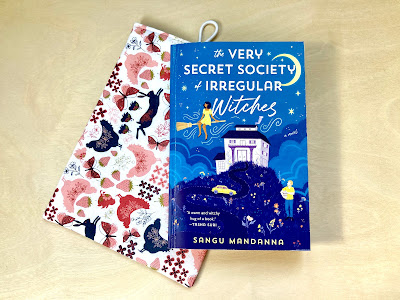
It was mere moments later that an e-version of the book was downloaded onto my iPad. And I devoured the novel in only a couple of days, loving every single second of it.
Here's the blurb for The Very Secret Society of Irregular Witches:
"A warm and uplifting novel about an isolated
witch whose opportunity to embrace a quirky new family--and a new
love--changes the course of her life.
As one of the few
witches in Britain, Mika Moon knows she has to hide her magic, keep her
head down, and stay away from other witches so their powers don't mingle
and draw attention. And as an orphan who lost her parents at a young
age and was raised by strangers, she's used to being alone and she
follows the rules...with one exception: an online account, where she
posts videos pretending to be a witch. She thinks no one will take it
seriously.
But someone does. An unexpected message arrives,
begging her to travel to the remote and mysterious Nowhere House to
teach three young witches how to control their magic. It breaks all of
the rules, but Mika goes anyway, and is immediately tangled up in the
lives and secrets of not only her three charges, but also an absent
archaeologist, a retired actor, two long-suffering caretakers,
and...Jamie. The handsome and prickly librarian of Nowhere House would
do anything to protect the children, and as far as he's concerned, a
stranger like Mika is a threat. An irritatingly appealing threat.
As
Mika begins to find her place at Nowhere House, the thought of
belonging somewhere begins to feel like a real possibility. But magic
isn't the only danger in the world, and when a threat comes knocking at
their door, Mika will need to decide whether to risk everything to
protect a found family she didn't know she was looking for..."
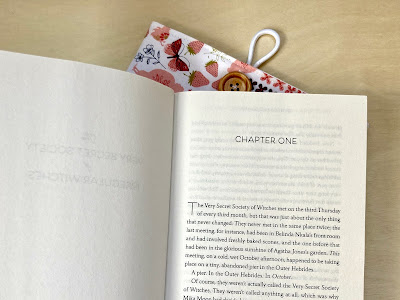
I
loved the main character Mika Moon, a witch who was brought to Britain
from India when she became an orphan shortly after her birth. She was
adopted by another witch, but was raised by a number of strangers until
she was an adult, and has been all alone for most of her life, apart
from her much-loved companion, a super cute golden retriever called
Circe. You can't help but feel for Mika, and admire her, as she
struggles to live the lonely path of a solitary witch.
To
banish her loneliness and connect with others, Mika runs a Youtube
channel where she pretends to be a real "witch", and posts witchy
content online to the masses. She is a ray of sunshine in the dark, and
people are drawn to her, including an elderly man who claims to know who
she really is–a real life witch. He begs for her help in teaching three
young witches to control their magic, and she can't resist breaking the
rules of her being a solitary witch, in order to help the young girls
while living in a remote home in the English countryside.
Mika becomes tangled up in the lives of her three challenging, but delightful charges, their wonderfully quirky cast of caretakers, and the surly, yet hot Irish librarian called Jamie, who is the grumpiness to her sunshine. She finds him hard to resist. Many hi jinks occur as the book continues on, along with lots of witchy goodness, and both laughter and tears. As the story unfolds, and Mika finds her place, and her home at Nowhere cottage, she begins to believe that maybe, just maybe it might be possible to not be alone anymore. But life is complicated, and not just because of all the magic swirling around them. There are secrets to be uncovered, and not all of them are pleasant...
As
much as I want to share more of the book with you, I don't want to
spoil the story. But there are a number of great quotes in the novel,
and this one is my favorite, and is said by Jamie, the hunky and grumpy
Irish librarian to Mika:
“It’s not always enough to go looking for the place we belong...Sometimes we need to make that place.”
―
Sangu Mandanna,
The Very Secret Society of Irregular Witches.
This quote pretty much sums up the heart of the book, sometimes you have to make the place and family you belong to.
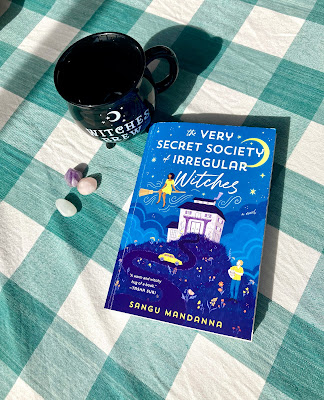
The
Very Secret Society of Irregular Witches is everything you're hoping
for in a book if you're after a cozy fantasy novel that is heartwarming
and uplifting, and has a diverse and inclusive cast of quirky characters
that you will adore. I really loved the found family trope, along with
the magical witchy aspects. If you used to be a fan of the book series
that can no longer be named, and have a magical shaped hole in your
heart, this may be the book to soothe you. It has a very similar feel to
the novel The House in the Cerulean Sea by TJ Klune, which I also
adore. Comparing the book to movies, it definitely has Practical Magic
and Kiki's Delivery Service vibes.
In
terms of the romance plot, in general it is sweet. There is only one
sex scene, and it isn't too explicit, it fits in perfect with the rest
of the book, and doesn't distract from it.
Coming into the autumn and winter season in the Southern Hemisphere, The Very Secret Society of Irregular Witches will be the perfect book to curl up with in front of a fire while drinking a mug of hot chocolate, as it is set during this time.
I
have a habit of trying to borrow a book from our local library first,
and if that isn't possible, to buy an ebook copy of a novel. Only if I
absolutely have fallen in love with a book, and know that I will reread
the novel over and over, will I then go and spend more money on buying a
paperback copy of a book. I loved The Very Secret Society of Irregular
Witches so much, that I bought a paperback copy of my very own. I hope
to reread it soon, when we go on holiday, so I can enjoy the book again
during autumn.
Have a wonderful day,
Julie-Ann
Want to discuss my post? Feel free to chat with me on Instagram or Mastodon.




